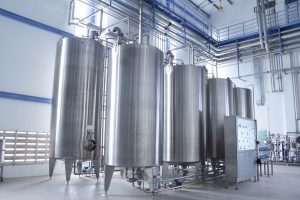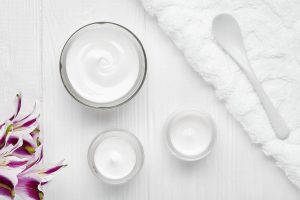It was interesting to meet France-based cosmetic products manufacturers at the Chimie Lyon / GIPHAC trade show in Lyon last week. Many were experiencing problems getting their tanks sufficiently clean and were having to carry out manual cleaning after their CIP (clean in place) systems had finished, a scenario that is clearly not ideal as it causes costly production delays as well as excessive use of water and / or cleaning fluids.

As with the food industry, cosmetics manufacturing vessels need to be scrupulously clean to prevent bacteria growth in the products (even more of an issue these days since preservatives such as parabens have been vilified) and cross contamination of batches with, for example, colourants and perfumes. However, the ingredients used in today’s ever more high-tech creams, lotions and make-up can be sticky, oily and water resistant, leaving residues on the walls of the mixing tanks that can be impossible to shift with run-of-the-mill CIP systems.
Further complicating matters is the design of the tanks themselves which may have baffles, mixers or other ‘obstacles’ in them that cause shadowing (when areas of the tanks cannot be reached by the CIP system because they are blocked by the obstacles) or they may be an awkward shape or just very big.
 Many manufacturers we spoke to were using static spray nozzles or spray balls or rotary spray systems, neither of which will be suitable for the residues they need to clean. The best option is likely to be the more robust and powerful rotary jet systems and even these will not give the required level of cleaning if they are a) not expertly scoped in to account for available water pressure, size of tank and the exact type of residue and b) configured to ensure that there are sufficient of them to give a complete cleaning coverage which accounts for objects and resulting shadowing.
Many manufacturers we spoke to were using static spray nozzles or spray balls or rotary spray systems, neither of which will be suitable for the residues they need to clean. The best option is likely to be the more robust and powerful rotary jet systems and even these will not give the required level of cleaning if they are a) not expertly scoped in to account for available water pressure, size of tank and the exact type of residue and b) configured to ensure that there are sufficient of them to give a complete cleaning coverage which accounts for objects and resulting shadowing.
We are looking forward to working with a number of the companies we met to come up with the best CIP solutions for them to solve their tank cleaning problems. We also hope to talk to tank manufacturers to discuss how production and storage tanks could be designed to facilitate or incorporate CIP systems. A smart self-cleaning tank would be a win-win for everybody, wouldn’t it?!



